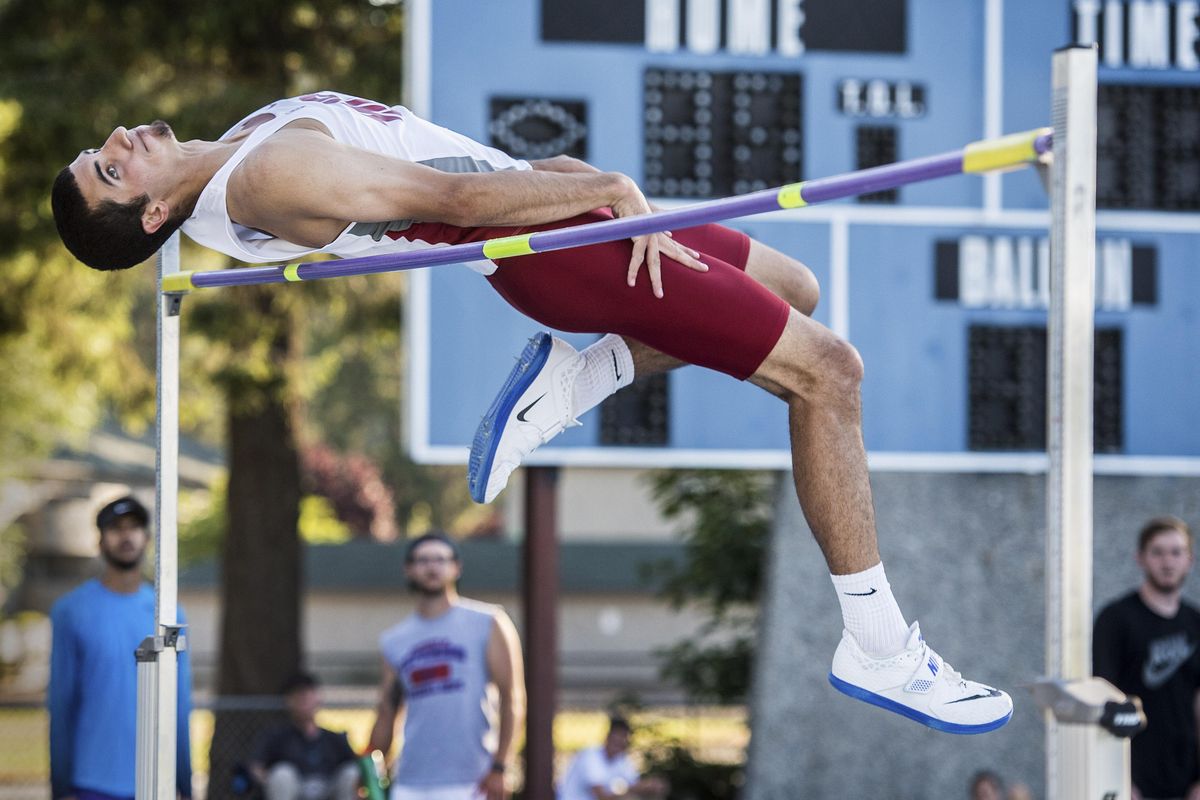Blanchette: High jumpers Martin, Pierson hope to get hot at U.S. Olympic Trials

There’s nothing quite so egalitarian as the all-comers track meet – the grinning 8-year-old charging around the curve in a relay race, oblivious to the Olympic long shot or world champion sailing over a crossbar a few feet away.
But even sky-high aspirations need a humble grounding.
So for the last few Tuesday nights, Noah Martin and Thane Pierson have brought their jumping shoes to the blue oval at Spokane Falls Community College, workshopping their show in advance of the U.S. Olympic Trials in track and field that start today in Eugene, Oregon.
It’s there the two high jumpers will have to catch lightning in a bottle.
Our Olympic crucible is no all-comers meet. But it’s egalitarian, too, in the sense that no matter what your resume, you have to prove it on meet day. That levels the opportunity, if not the odds.
“I’m not expecting to make the team,” said Martin with a teenager’s candor, “but on a perfect day, there’s a chance.”
He might be due a perfect day.
He had a pretty good one back in April when he cleared 7 feet, 3 inches at the Mooberry Relays, history’s best jump by a Spokane high schooler. Two weeks later, he broke his collarbone playing Frisbee (”I just leaned over and lost my footing”), ending his senior season at University High School and any chance at defending his State 4A title.
But he’s a quick healer. After surgery, he was cleared to jump on June 9, and given a chance to rewrite the ending to his season before he heads to Montana State in the fall.
Pierson, too. The Washington State senior had a great spring going, pushing his best to 7-3 and winning the Pac-12 title in Seattle. But he struggled at the NCAA preliminary round in Lawrence, Kansas, and finished 13th – one spot out of advancing to the national meet.
“I was thinking about getting through (the prelim round) without any misses,” Pierson said, “and I didn’t make it through at all.”
So neither of them are riding a big wave of momentum going into Eugene. Unless you count just getting in.
As it happens, only seven U.S. jumpers met the Trials standard of 7-5 3/4 during the year-long qualifying period. To fill the prescribed 24-man field, USA Track and Field let its fingers go walking down the yearly performance list and invited anyone with a clearance of 7-2 1/2 or better.
For the add-ons like Martin and Pierson, that means an extra obstacle. Even if one of them manages to crack the top three that would normally decide the team to Rio de Janeiro, he’d also have to jump at least 7-6 – the Olympic qualifying standard.
Which says something about the state of the event in the U.S.
It’s been 60 years since Charlie Dumas became the first man to top 7-feet, and Dick Fosbury’s flop sent waves of jumpers over the bar two decades later. In 1984, it took a 7-4 1/2 clearance to get into the Trials. That same year, four of Pierson’s Cougar forebears – Brent Harken, James Cunningham, Brett Lowery and a Cypriot named Anastasios Djonis – made it over 7-1 in the same meet. The previous year’s WSU team had six 7-footers on the roster.
That depth has ebbed, and so have the numbers of jumpers at the point of the pyramid.
“I think you’re seeing it especially from college to that next step,” said WSU coach Wayne Phipps. “Is there the opportunity for a guy who’s a 7-3 high jumper with potential? Is it worthwhile for them to hang on after college? You’re seeing it in the other field events, too.
“For a distance runner, there’s more opportunity to keep going – in the Northwest alone, there’s a number of clubs and training groups in Seattle, Portland and Eugene where they can get coaching and support. Can you name an elite level high jump club? For those athletes and others, you’re on your own.”
Indeed, Pierson – who jumped for just a year at Naches Valley before coming to WSU – is unsure he can justify postgraduate investment in his love.
“If I did manage a PR – 2.25 (meters, 7-4 1/2) or so – then I’d think about it more seriously,” he said. “Money and training is a problem. If it was free, I’d definitely keep going.”
Which makes nurturing the younger talents, like Martin, even more critical.
It seems odd talking about a talent drain when Spokane high schools produced two 7-footers just this year, Shadle junior Jakobe Ford being the other. But, of course, there’s more to it than ability, and Martin’s makeup suggests he’ll be heard from well beyond next week.
“First of all, he’s really smart – he’s a student of the event,” said his coach, Liz Wardsworth. “And this kid has a drive that separates him from a lot of kids who just dream big.”
But if there’s a time to dream big, it’s now.